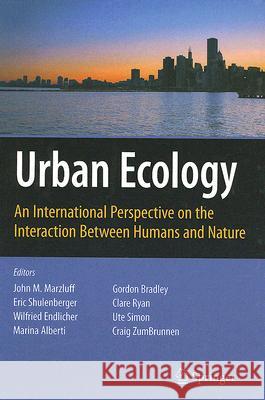Urban Ecology: An International Perspective on the Interaction Between Humans and Nature » książka
Urban Ecology: An International Perspective on the Interaction Between Humans and Nature
ISBN-13: 9780387734118 / Angielski / Twarda / 2008 / 808 str.
Urban Ecology: An International Perspective on the Interaction Between Humans and Nature
ISBN-13: 9780387734118 / Angielski / Twarda / 2008 / 808 str.
(netto: 460,04 VAT: 5%)
Najniższa cena z 30 dni: 462,63
ok. 22 dni roboczych
Dostawa w 2026 r.
Darmowa dostawa!
to a Research Project Ernest W. Burgess Abstract The aggregation of urban population has been described by Bucher and Weber. A soc- logical study of the growth of the city, however, is concerned with the de nition and description of processes, as those of (a) expansion, (b) metabolism, and (c) mobility. The typical tendency of urban growth is the expansion radially from its central business district by a series of concentric circles, as (a) the central business district, (b) a zone of deterioration, (c) a zone of workingmen s homes, (d)a residential area, and (e) a commuters zone. Urban growth may be even more fundamentally stated as the resultant of processes of organization and disorganization, like the anabolic and katabolic processes of metabolism in the human body. The distribution of population into the natural areas of the city, the division of labor, the differentiation into social and cultural groupings, represent the normal manifestations of urban metabolism, as statistics of disease, crime, disorder, vice, insanity, and suicide are rough indexes of its abnormal expression. The state of metabolism of the city may, it is suggested, be measured by mobility, de ned as a change of movement in response to a new stimulus or situation. Areas in the city of the greatest mobility are found to be also regions of juvenile delinquency, boys gangs, crime, poverty, wife desertion, divorce, abandoned infants, etc."











